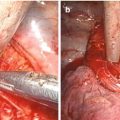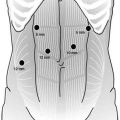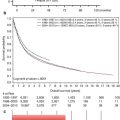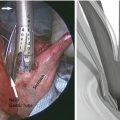Cardiac disease
Pulmonary disease
Liver disease
VTE
Nutrition
Frailty
Risk factors
CAD
COPD/asthma
ETOH
Hx of VTE
> 10 % Weight loss
Age > 65
Prior MI
Exercise intolerance
Hepatitis
Immobility
Albumin < 3.5
Impaired gait
Angina
Prior lung surgery
Stigmata
Malignancy
BMI < 18
Recent chemotherapy/surgery
Diabetes
Varices seen on imaging
Chemotherapy
Chronic disease
Hypertension
Evaluation
EKG
Pulmonary function testing
Childs score
As clinically indicated
Dietitian consult
Frailty testing
Echo
Exercise stress testing
Intervention
Coronary angiography/intervention
Smoking cessation
Appropriate anticoagulation
Pre-op supplement
Physical/occupational therapy
Risk factor modification
Respiratory training
Inferior vena cava filter placement prior to surgery
TPN
Dietitian consult
B-blockers
Oral hygiene
Stent
Polypharmacy evaluation
Statins
Feeding tube
Psychiatric/neurologic evaluation
Relative contraindication
Uncorrected myocardial ischemia
FEV1 < 70 %
Childs A or worse
Inability to maintain weight
VO2 max < 11 ml/kg/min
FVC < 80 %
Portal hypertension
Cardiac
Arrhythmia is common after esophagectomy, occurring in 20–30 % of patients [5]. The most common arrhythmia is atrial fibrillation occurring in 10–20 % of cases [6, 7] It is associated with an increased hospital length of stay and increased risk of postoperative death. A retrospective review of esophagectomy found an association between male gender, age greater than 65 years, history of COPD, history of cardiac disease, and neoadjuvant therapy with an increased risk of postoperative atrial fibrillation [7, 8]. Therefore, patients at increased risk of arrhythmia should be evaluated and appropriate optimization considered preoperatively. Patients on beta blockade should have this continued, electrolytes repleted, and statin therapy considered.
There continues to be debate over postoperative arrhythmia prevention [9]. A prospective randomized trial of amiodarone initiated at the time of general anesthesia induction found a significant decrease in post-esophagectomy atrial fibrillation (15 % versus 40 %), with no increased adverse effects [9]. However, amiodarone use can cause pneumonitis in 10–15 % of patients leading to death in 10 % of those affected. For this reason, amiodarone use should be reserved for patients at high risk for postoperative atrial fibrillation (e.g., age > 70 or cardiac disease) and low risk for pulmonary injury.
Myocardial infarction is uncommon after esophagectomy (1–2 %). However, patients should be assessed for their risk for postoperative MI according to the ACC AHA guidelines [10]. Esophageal surgery is considered intermediate risk with a 1–5 % chance of perioperative MI. Preoperative assessment may include EKG, echocardiography, exercise stress testing, and coronary angiography as appropriate. For patients with limited fitness at centers with cardiopulmonary exercise testing, a VO2 max less than 11 ml/kg/min predicts complications following esophagectomy [11].
The use of perioperative beta-blockers and statins deserves mention. While the addition of beta-blockers as prophylaxis against postoperative events is controversial, patients who are already on these drugs should have them continued in the perioperative setting [12]. Statin use may reduce the risk of myocardial infarction as well as the risk of postoperative atrial flutter in patients undergoing noncardiac surgery [13]. Their use should be considered in patients deemed to be at elevated risk of postoperative cardiovascular events.
Pulmonary
Pulmonary complications are the most frequent complication following esophagectomy occurring in 20–40 % of patients. Despite the advances in minimally invasive surgery, all patients should be prepared for possible thoracotomy. Pulmonary testing should be considered in patients who have a history of smoking, pulmonary disease, or signs and symptoms suggestive of an underlying pulmonary disorder. Patients with compromised pulmonary function as evidenced by FVC < 80 % and FEV1 < 70 % predicted have been shown to have an increased risk of pulmonary complications [14]. Patients who are identified to have an increased risk of pulmonary complications may benefit from preoperative rehab or training [15, 16].
Preoperative interventions can prevent postoperative pneumonia. Smoking cessation at least 1 month prior to surgery has been associated with decreased incidence of pneumonia following thoracic surgery. Smoking cessation, respiratory training (incentive spirometry, respiratory muscle stretching, deep diaphragm breathing, and effective cough), and attention to oral hygiene/plaque removal decrease pulmonary complications following esophagectomy [17]. Minimally invasive esophagectomy causes fewer pulmonary complications. In an open-label, randomized trial, minimally invasive esophagectomy greatly decreased inpatient pulmonary complications (29 versus 9 % open) [18].
Hepatic Disease
Patients with liver disease are at an increased risk of mortality following surgery. Alcohol use contributing to squamous cell esophageal cancer risk factors may also induce cirrhosis and liver dysfunction. While varices may be seen on preoperative imaging, liver dysfunction may be occult until the perioperative setting. Mortality approaches 100 % in patients with Childs C criteria. Even Childs A patients have mortality as high as 10 % following esophagectomy [19]. In a review of 18 known cirrhotics undergoing esophagectomy, Tachibana et al. found an overall 16.7 % mortality (versus 5.7 % in noncirrhotics). One-year and 3-year survivals were also significantly less [20]. The presence of cirrhosis should be considered in all patients who have a history of liver disease, overt physical signs on examination, irregularities on liver function tests or imaging, or known risk factors. Liver biopsy may be necessary to confirm the diagnosis.
Age
Using a specific age exclusion for esophagectomy is controversial [21]. Age-related comorbidities foster complications which are tolerated poorly because of concomitant reductions in organ reserve. There are recent reports in the literature regarding the safety of esophagectomy performed in elderly patients. Pultrum et al. report their experience performing extended esophageal resection via thoracolaparotomy at a high volume center. While there was no difference in overall survival, perioperative morbidity was predictably higher in patients greater than or equal to 70 years, particularly in regard to pulmonary, cardiac, and infectious complications [22]. This report has been criticized as potentially difficult to reproduce because few centers could achieve the authors’ case volumes [21]. A recent pooled analysis of 25 studies revealed that elderly patients were less likely to receive neoadjuvant therapy and more likely to experience inhospital mortality and pulmonary and cardiac complications [23].
More important than age is overall patient frailty. Multiple factors have been described and shown to be associated with postoperative outcomes (Table 5.2) [24]. A prospective study found the degree of frailty to be associated with the rate of postoperative complications [25]. In a recent study of esophagectomy patients in the NSQIP database, both morbidity and mortality increased with the presence of 1 of 11 NSQIP-measured preoperative variables as determined by a modified frailty index. As the number of items present in the frailty index increased from zero to five, the rate of a serious complication requiring ICU admission increased from 18 to 61 %. Mortality rate increased from 1.8 to 23.1 % [26].
Table 5.2
Frailty in the surgical patient
Functional factors | Medical factors |
|---|---|
Difficulty with activities of daily living | Diabetes |
Weight loss | Pulmonary disease (COPD, pneumonia) |
Body mass index | Cardiac disease (CHF, MI, hypertension) |
Grip strength | Peripheral vascular disease |
Gait speed | Cerebral vascular disease (TIA, CVA) |
History of falls | Delirium |
History of depression |
In summary, age alone should not preclude esophagectomy but should be considered in the context of the patients overall functional status, frailty index, and associated comorbid conditions.
Obesity
Obesity is an epidemic problem causing an increased incidence of distal esophageal cancer. Therefore, surgeons can expect to encounter more obese patients with esophageal cancer. Obese patients have higher rates of diabetes and underlying cardiac and pulmonary diseases. Preoperative evaluation of the obese patient may require echocardiography, cardiopulmonary exercise testing, pulmonary function testing (with special attention to functional residual capacity), evaluation for obstructive sleep apnea, risk modification for venous thromboembolism (VTE), and optimizing glycemic control for patients with a HgA1c > 8 % [27–29].
The incremental contribution of obesity to perioperative morbidity and mortality is controversial. Obesity itself has not been related to increased morbidity and mortality in patients undergoing surgery for intra-abdominal cancer [30]. However, anastomotic and wound complications increase in obese patients with diabetes [31–33]. In addition, several studies report no detrimental effect on survival in the obese esophageal cancer patient [33–35]. Minimally invasive esophagectomy in the obese patient is also feasible with similar morbidity and mortality but longer operative times [36]. Like age, obesity, per se, should not preclude open or minimally invasive esophagectomy; however, care must be taken when managing coexistent comorbidities.
Venous Thromboembolism
Thromboembolic events occur in 14–32 % of patients undergoing neoadjuvant therapy for esophageal cancer [37, 38]. Such patients require extended anticoagulation therapy for treatment and prevention of end-organ damage, which may delay time to surgery. Decisions regarding the timing of surgery, the role of perioperative anticoagulation, and IVC filter placement need to be made on a case-by-case basis. Current guidelines suggest the use of inferior vena cava filters in patients with residual DVT and a contraindication to anticoagulation, recurrent DVT or PE despite anticoagulation, and patients undergoing major surgery within 2 months of a thromboembolic event [39]. Removal of the filter should be considered once the patient is deemed appropriate to resume anticoagulation and is easiest performed within 10–14 days of placement [39]. Inferior vena cava filter placement in patients with recent DVT/PE before planned esophagectomy may decrease the risk of fatal perioperative pulmonary embolism.
Prior Surgical History
Minimally invasive esophagectomy requires operating in both the abdominal and thoracic cavities and is made more complex by previous surgical procedures in these regions. Previous thoracotomies, upper abdominal (e.g., anti-reflux or ulcer) surgeries, and prior head and neck procedures deserve mention.
Orringer et al. reported their experience performing transhiatal esophagectomy for benign disease in patients having had prior operation for GERD or hiatal hernia. Thoracotomy was necessary in 16.6 % and a colonic conduit was required in 10.6 % of patients [40]. MIE has also been reported in patients after thoracotomy for end-stage achalasia [41].
Esophageal cancer after bariatric surgery is uncommon. However, with the increased use of bariatric surgery, we can expect reports to increase. A recent series describes an experience of five minimally invasive esophagectomies following gastric bypass. Four had undergone laparoscopic Roux-en-y gastric bypass and one patient had open bypass. One patient required colonic interposition for reconstruction after esophagectomy. There was no mortality in their series. The previously bypassed stomach is utilized as the new gastric conduit, while the Roux limb is utilized for jejunostomy tube placement [42].
Prior head and neck surgery can complicate esophagectomy depending on the planned surgical approach. A cervical anastomosis may prove challenging given prior dissection or radiation within the operative field. For this reason, a thoracic dissection and anastomosis should be considered in these patients.
Nutritional Assessment and Optimization
Patients with esophageal cancer frequently present with dysphagia and variable degrees of weight loss prior to diagnosis. For this reason, nutritional assessment before any treatment is imperative.
Assorted methods can assess the nutritional status of cancer patients. Clinical parameters include weight loss, dietary change as a marker for dysphagia, and gastrointestinal symptoms including nausea, vomiting, diarrhea, and anorexia. Physical exam findings suggestive of malnutrition include loss of subcutaneous fat, muscle wasting, edema, and ascites as signs of protein calorie malnutrition (see Table 5.3). Laboratory evaluations include assessments of rapid turnover proteins including albumin (half-life 20 days), prealbumin (half-life 2–3 days), and transferrin (half-life 8–10 days) [43].
Table 5.3
Factors associated with malnutrition
Weight loss > 10 % |
BMI < 20 kg/m2 |
Albumin < 3.5 g/dL |
Prealbumin < 10 mg/dL |
Degree of dysphagia |
Gastrointestinal symptoms |
Muscle wasting |
Loss of subcutaneous fat |
Ascites |
Edema |
Weight loss greater than 10 % over 3–6 months and greater than 5 % over 1 month suggests significant malnutrition [44]. Preoperative nutritional supplementation, provided as TPN, was found to be beneficial only in the most malnourished [45]. Immuno-enhanced enteral supplementation has been studied with the hope of decreasing morbidity and mortality following major surgery for gastrointestinal cancer. A randomized controlled trial that utilized preoperative immunotherapy (supplementation of omega 3 fatty acids) failed to demonstrate a significant difference in length of stay or morbidity in esophagectomy patients [46]. However, a meta-analysis of studies using immunonutrition in the perioperative setting for patients undergoing elective gastrointestinal cancer operations showed shorter length of stay and fewer postoperative infectious complications [47]. At this time, the use of immunonutrition in the perioperative setting remains controversial. Severely malnourished patients may benefit but should be treated for approximately 2 weeks preoperatively [48, 49].
Often, esophageal cancer patients need additional nutritional support. Enteral is preferred over parenteral nutrition to avoid infectious complications. This is especially important when multimodality therapy is considered. The ability to maintain nutritional status fosters completion of multimodality regimens [50, 51]. This can be accomplished in a number of ways: esophageal stenting, gastrostomy, or jejunostomy. Each of these methods has its own advantages and disadvantages (see Table 5.4).
Table 5.4
Advantages and disadvantages of different methods of enteral support
Advantages | Disadvantages | |
|---|---|---|
Gastrostomy | Ease of placement | Potential injury to conduit |
Bolus feeds | ||
Jejunostomy | Evaluate for metastatic disease | Unable to bolus (requires pump) |
Able to use post-resection | Usually surgically placed | |
Esophageal stent | Immediate relief of dysphagia | Retrosternal pain |
Improved quality of life | Requires removal before resection | |
Migration/perforation |
Gastrostomy can be achieved endoscopically and by interventional radiology techniques or surgical placement. The use of gastrostomy before esophagectomy is somewhat controversial due to the risks of injuring the future gastric conduit or its blood supply. In general, percutaneous endoscopic gastrostomy tubes have low complication rates, and esophagectomies following placements have not been associated with increased conduit-related complications [52]. Transoral placement poses its own difficulties due to an obstructing tumor. Additionally, a recent study identified g-tube site metastasis in 9.4 % of patients undergoing endoscopic placement in esophageal cancer [53].
Stay updated, free articles. Join our Telegram channel

Full access? Get Clinical Tree








